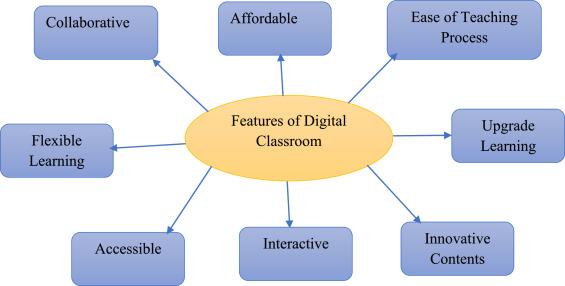How 5G is Revolutionizing online Learning: Unleashing the Full Potential of Digital Education
The dawn of the 5G era is redefining the landscape of online learning, delivering lightning-fast speeds and ultra-reliable connectivity. As educational institutions, educators, and students worldwide embrace digital learning solutions, understanding how 5G technology is transforming online education becomes crucial. In this comprehensive article, we’ll dive deep into the role of 5G in unleashing the full potential of digital education, explore its key benefits, real-world case studies, practical tips, and what the future holds for a more connected, immersive, and accessible learning experience.
What is 5G and Why Does it Matter for Online Learning?
5G, or fifth-generation wireless technology, is the latest evolution in mobile internet connectivity. Offering data speeds up to 100 times faster than 4G and drastically reduced latency (lag), 5G unlocks brand-new possibilities for digital education. High-capacity networks, seamless device connectivity, and stable performance meen that online learning can transcend previous limitations and deliver richer, more interactive educational experiences.
- Ultra-fast speeds – Smooth video streaming, instant downloads, and quicker access to learning materials.
- Low latency – Real-time collaboration,virtual classrooms,and interactive tools with minimal delay.
- Higher device density – More students and educators can connect together without network issues.
- Reliable connections – Consistent online classes, fewer interruptions, and improved participation worldwide.
Key Benefits of 5G in Online Education
the integration of 5G into online learning platforms brings a host of benefits for both students and educators. Let’s break down the most impactful advantages.
1. Enhanced Mobile Learning Experiences
- High-definition video calls and lectures are now accessible anywhere,anytime,with minimal buffering.
- Mobile devices become powerful learning tools, enabling students to participate in virtual classes on the go.
2. Immersive Technologies: Virtual Reality (VR) & Augmented Reality (AR)
- VR classrooms and 3D simulations: 5G’s low latency and high bandwidth allow for fully immersive learning environments where students can dissect virtual frogs, tour historical sites, or participate in science experiments — all from their living room.
- AR overlays: Educational apps can superimpose digital content over real-world settings, making lessons more interactive and capable of addressing different learning styles.
3. Real-time Collaboration and Feedback
- Students and teachers can work together seamlessly via cloud-based platforms, video conferencing, and digital whiteboards.
- Live polls, quizzes, and discussion forums become more engaging and responsive.
4. Greater Accessibility and Inclusion
- Students in remote or underserved areas: 5G bridges the digital divide by providing reliable access to educational resources, regardless of geographical or socioeconomic factors.
- Assistive technologies: Enhanced connectivity supports students with disabilities, enabling them to use adaptive devices and software without lag.
5.Seamless Integration with IoT Devices
- Smart classrooms with IoT devices (smart boards, sensors, wearables) function smoothly, measuring student engagement and tailoring learning paths.
How 5G is Shaping the Future of Digital Education: Real-world Case Studies
Schools and universities around the world are already reaping the rewards of 5G-powered online learning.Here are some standout examples:
Case Study 1: Seoul’s Smart Schools (South Korea)
In South Korea, several ‘smart schools’ have leveraged 5G to implement real-time VR classes, AI-based language learning apps, and monitoring tools to track student progress. The high-speed connectivity ensures students in both urban and rural areas receive the same quality of education.
Case Study 2: Remote Science Labs in the UK
Select UK secondary schools have piloted 5G-enabled remote science labs, where students participate in live experiments using robotic arms and instant HD video feedback. This setup breaks down barriers to hands-on STEM education and supports better learning outcomes.
Case Study 3: Indian EdTech and Inclusive Learning
Indian education technology firms are using 5G to stream classes to villages and underserved communities, democratizing access to top-tier instructors and resources, and laying the foundation for lifelong learning and digital literacy.
First-Hand Experience: Student and Teacher Perspectives
“With 5G, lag is a thing of the past. My virtual art classes are more interactive, and sharing large project files is fast and seamless. It’s made online learning feel just as dynamic as being in school.”
— Maya, high school student
“5G-enabled AR apps help me teach complex biology concepts. Students can visualize molecules and cells, ask questions in real time, and collaborate on projects. The engagement boost has been amazing.”
— Mr. Carter, biology teacher
Practical Tips: How to Maximize 5G for Online learning
Ready to leverage 5G for better online education? Here are some actionable tips for educators, students, and institutions:
- Upgrade your hardware: Invest in 5G-compatible devices (smartphones, tablets, laptops, routers) to take full advantage of speed and coverage.
- Explore immersive learning tools: Try VR headsets,AR apps,and interactive platforms designed for 5G use.
- Adopt cloud-based learning management systems: Ensure your LMS supports live collaboration,file sharing,and video streaming to optimize 5G capabilities.
- Focus on cybersecurity: As connectivity grows, so do risks. Use secure networks, strong passwords, and reliable software to protect data.
- Encourage digital literacy: Train students and staff to use new technologies effectively and safely.
Challenges and Considerations
While the benefits are vast, there are challenges to implementing 5G in online education:
- Infrastructure costs: Upgrading networks and devices may require significant investment for schools and governments.
- Digital divide: Not all regions will have equal access to 5G, at least initially. Bridging this gap is essential for true educational equality.
- Privacy concerns: More data-intensive applications necessitate stronger privacy regulations and awareness.
Conclusion: The 5G-Powered Future of Education
The arrival of 5G is revolutionizing online learning by breaking customary barriers and paving the way for dynamic, inclusive, and immersive digital education. As network infrastructure expands and costs decrease,educational institutions can harness this technology to personalize learning,facilitate international collaboration,and prepare students for a digital-first future.
Are you ready to embrace the transformative potential of 5G in your online learning surroundings? Taking proactive steps and staying informed will ensure you’re positioned to make the most of this educational revolution.
Embrace the future—because with 5G,digital education knows no limits!

